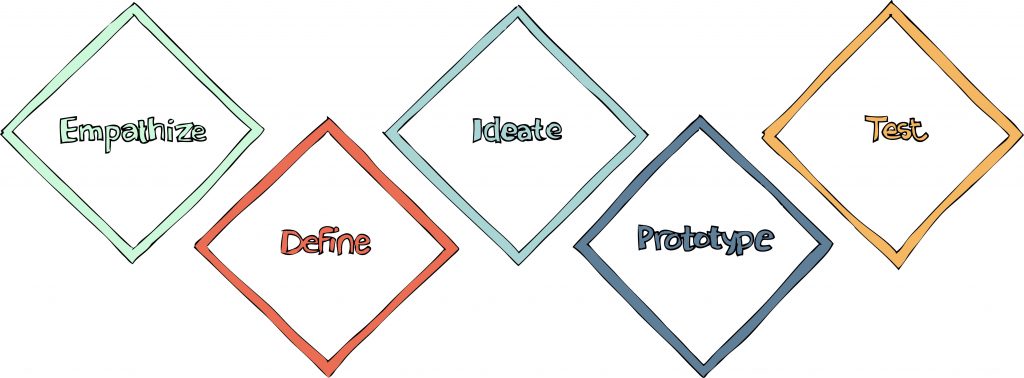All human beings have an innate ability to design (Cross, (2011)) and design thinking can be learned and practiced by people with all sorts of disciplinary backgrounds. Design thinking is an approach inspired by the design practices (Lawson (2005), Cross (2007)), which entails a non-linear process consisting of a holistic analysis of the problem as well as an exploration of many different possible solutions before implementation of a final solution. A process which requires an ability to deliberately shift between divergent thinking and convergent thinking. Another essential element is curiosity about and insight into human needs, behavior and context as a mean to qualify both problem understanding and the development of new meaningful and valuable solutions.
Visual and tactile representations (eg. sketches, prototypes, diagrams, models, etc.) are crucial elements in design thinking for communicating, evaluating and qualifying knowledge and ideas, because verbal and written communication does not suffice in supporting dialogue and development work in this type of process. (See also Brandt (2007) and Carlile (1997))
Design thinking is particularly suitable as an approach for solving “wicked problems” (Rittel (1973), Buchanan (1992)), i.e. open-ended problems which are ill-defined and often leeds to new problems when someone tries to solve them. In this type of problem solving it is necessary to incorporate and utilize knowledge from many disciplines both in order to qualify better understanding of the problem and also to enable the development of innovative solutions .
Design thinking was brought into a commercial context in the early 00’s when the consulting firm IDEO caused attention to the potential of using design thinking as a strategy to create innovative products and services based on insight into human behavior, technology and business opportunities.
Principles of design thinking:
- Explore the problem from many different perspectives and determine whether you are actually focusing on the right problem. The problem will probably need to be reframed several times during the process.
- Qualify and assess ideas for solutions continuously with potential users, customers and other relevant stakeholders.
- Work with visual and tactile representations of knowledge and ideas.
- Build prototypes and use them to communicate and test your ideas for solutions with relevant stakeholders.
- Be curious and seek out new insights that might change your ideas and set off new directions for your project.
EXAMPLES OF USE

